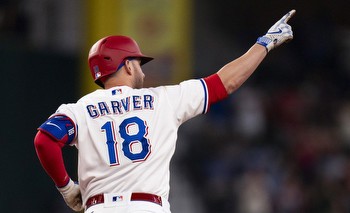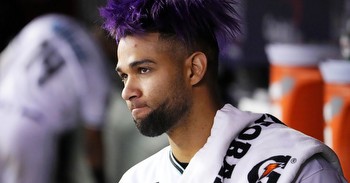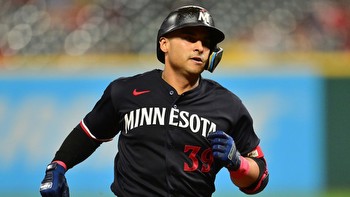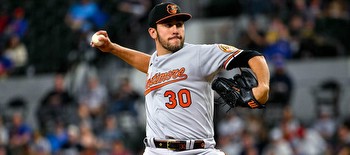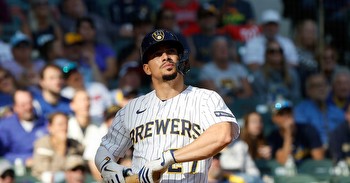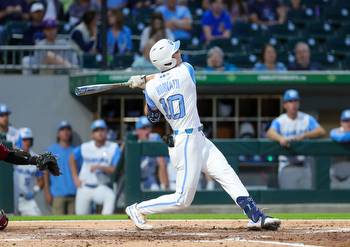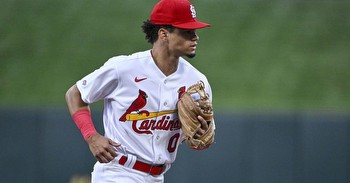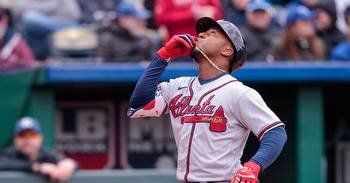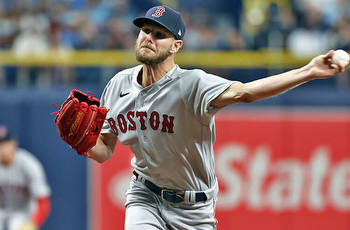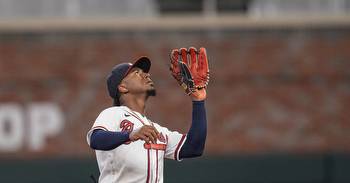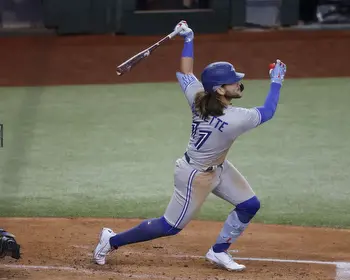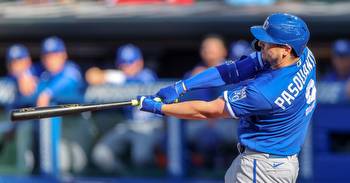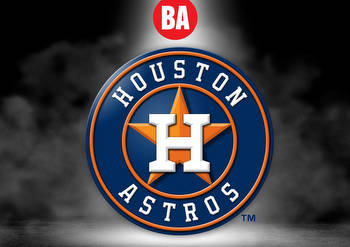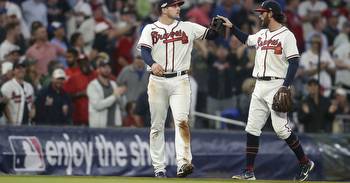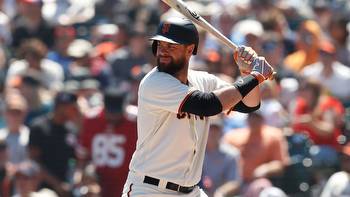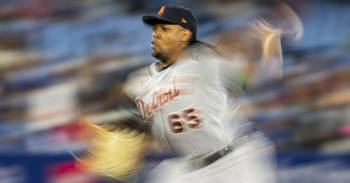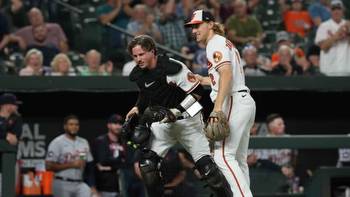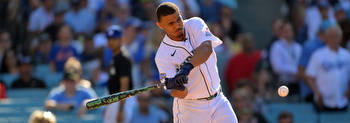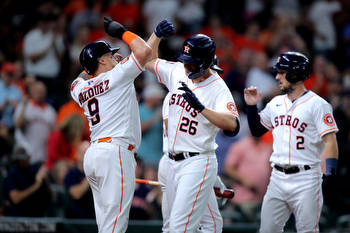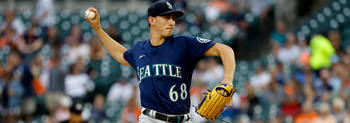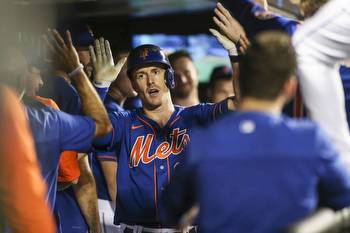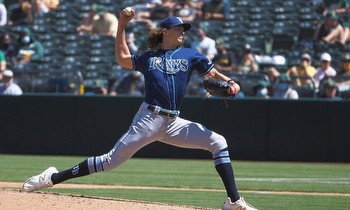The Outlook Isn’t So Good for Yuli Gurriel
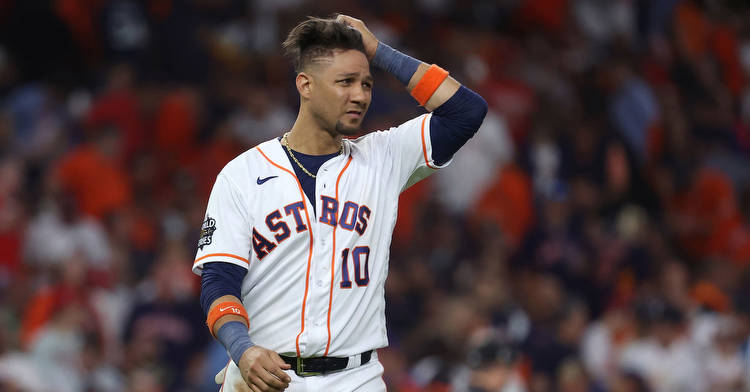
Yuli Gurriel has played professional baseball around the world, suiting up in Cuba and Japan before making his way to MLB. Yet since moving stateside, Gurriel has worn just one uniform, and it still seems strange to think of him wearing any colors other than blue, orange, and white. In seven years with the Houston Astros, he won a Gold Glove, four American League pennants, and two World Series championships. Someday, he’ll earn a plaque in the Astros Hall of Fame. In 2023, however, he’s hoping to prolong his big-league career with a new ball club.
Astros GM Dana Brown has professed a tad bit of interest in re-signing Gurriel, although that supposed interest may have been a gesture of respect rather than a genuine expression of desire. With José Abreu at first base and Michael Brantley as the DH, there isn’t room for Gurriel in Houston’s starting lineup. He could take a spot on the bench, displacing David Hensley, but Gurriel would likely prefer more guaranteed playing time and the Astros might prefer to see what Hensley has to offer.
Per the Miami Herald, the Marlins made an offer to Gurriel earlier this winter, but the veteran was hesitant to accept. The Fish eventually nixed the deal, although the Herald’s report suggests they could still invite Gurriel to camp as a non-roster invitee. Perhaps he should have taken the guaranteed cash when it was still on the table. The Twins, another club linked to the first baseman this offseason, recently came to terms with Donovan Solano. Presumably, Solano took the roster spot and the salary that might have otherwise gone to Gurriel.
Spring training is now well underway, and Gurriel’s options are dwindling. Most teams with room for a veteran first base bat have already found their guy: the Reds nabbed Wil Myers, the Cubs picked Eric Hosmer, and the Athletics took a chance on Jesús Aguilar. At this point, it’s unlikely Gurriel will find a team willing to offer him regular at-bats, and he may have to settle for a minor league deal. It’s a disappointing outcome for a player just one year removed from winning the AL batting title and putting up a career-best 132 wRC+. So how did Gurriel get to this point?
The 2022 season was a tough one for Gurriel. In 584 PA, he was worth -0.9 WAR, the lowest figure among qualified hitters. Once heralded as a five-tool player, Gurriel was a shell of his former self. His bat was mediocre, his power was lacking, his baserunning was poor, and his defense was lousy – in other words, his toolbox was empty. In 2021, Gurriel gave fans hope that he could buck the aging curve. Last year, however, his 38 years caught up to him.
Gurriel’s Baseball Savant page provides a good preliminary explanation of what went wrong. His barrel rate dropped, his hard-hit rate dropped, and – you guessed it – his average exit velocity dropped too. He wasn’t hitting the ball as hard as he used to, so he wasn’t getting as many hits. Yet the problem was more localized than that. On groundballs and line drives, his average EV and HardHit% were both close to his career averages. But on fly balls, his quality of contact took a major hit:
Gurriel’s Exit Velocity
via Baseball Savant
Gurriel’s HardHit%
via Baseball Savant
With that in mind, it’s no surprise Gurriel’s production on fly balls suffered in 2022:
Gurriel’s Production on Batted Balls
In case you’re wondering, that’s not a typo. Gurriel really did have a 20 wRC+ on fly balls last season. For comparison, the league average was 131. The Astros first baseman hit 194 fly balls and only managed a hit on 26 of them. Only 21 went for extra bases. On groundballs and line drives, Gurriel was perfectly fine. His performance on grounders was down relative to his career numbers but was still comfortably above average. His performance on liners was actually his best in years. On top of that, he outperformed the average hitter on balls not in play too, thanks to his minuscule strikeout rate. In other words, he was better than average when it came to three of four possible outcomes – groundballs, line drives, and balls not in play – but he performed so dreadfully on fly balls that it dragged his numbers down to the basement.
This isn’t entirely new. Fly balls have always been Gurriel’s weakness. These are his career numbers compared to the AL average since he entered the league:
Gurriel vs. League Average
Gurriel has never been a major home run threat, but he’s always had just enough pop that his other skills were sufficient to compensate. In 2022, he was still good at the things he did well, but he was worse than ever at what he already did poorly. No longer could his other skills pick up the slack.
To make matters worse, Gurriel’s problems at the plate were exacerbated by bad plate discipline. The man is a bat-to-ball machine; he rarely strikes out and almost never whiffs. However, that doesn’t mean he has a good eye at the plate. He swings more than the average hitter at pitches outside the zone and less than the average hitter at pitches inside the zone. The result has always been a high contact rate but an equally low walk rate.
Then, in 2021, Gurriel made a notable effort to improve his plate discipline without sacrificing contact. He swung less often, particularly at pitches outside the strike zone. He posted a career-high contact rate and a career-low swinging strike rate. His first-pitch strike percentage was better than average for the very first time. Accordingly, he walked more than twice as often as he did in the first five years of his career. He led the AL with a 0.87 walk-to-strikeout ratio, and his .383 OBP was second only to Vladimir Guerrero Jr.’s. It’s no wonder he posted such excellent offensive numbers, including the highest wRC+ of his career.
All that progress went out the window in 2022. Gurriel’s swing and o-swing rates jumped back up to where they once were. His walk rate fell in response. Moreover, since Gurriel rarely whiffs, he ended up making a ton of contact on pitches outside the strike zone. In other words, he was making more contact on less hittable pitches. Pitches in the strike zone that were put in play last season had a .379 wOBA. Pitches from outside the strike zone that were put in play had a .292 wOBA. It makes sense – when a batter hits bad pitches, he’s more likely to make bad contact. That’s exactly what happened to Gurriel, who had a .317 wOBA on balls put in play from inside the zone and a .250 wOBA on balls put in play from outside the strike zone. Therefore, not only did Gurriel’s walk rate plummet, but his quality of contact worsened thanks to his poor approach at the plate.
To sum it all up, Gurriel’s biggest weakness – his lack of power – became an even bigger problem last season. Meanwhile, the newfound plate discipline that briefly helped him defy the aging curve completely disappeared. He still possesses elite contact skills, but those skills are far less valuable when he’s swinging at worse pitches and hitting without thump.
It’s easy to point to Gurriel’s 2021 season and identify the 38-year-old as a prime bounce-back candidate. Unfortunately, his performance in 2022 doesn’t leave much room for optimism. Gurriel has had an excellent big league career, and one that could have been all the more impressive had he made his way to the majors sooner. Yet as he enters his age-39 season, there’s a reason teams have been hesitant to offer him a guaranteed role. Thus, if Gurriel wants to get back on the field, a minor league contract might be his best bet. If the Marlins are still calling, he’d be wise to pick up the phone.

